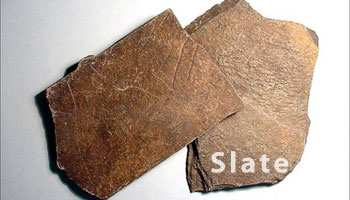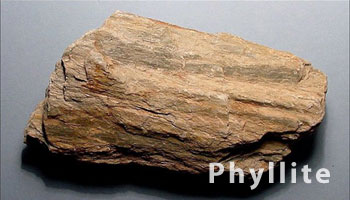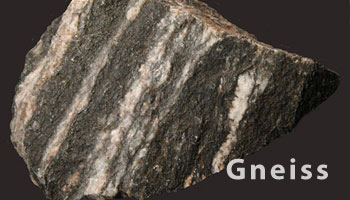Foliated metamorphic rocks are formed within the Earth’s interior under extremely high pressures that are unequal, occurring when the pressure is greater in one direction than in the others (directed pressure). This causes the minerals in the original rock to reorient themselves with the long and flat minerals aligning perpendicular to the greatest pressure direction. This reduces the overall pressure on the rock and gives it a stripped look.
Foliated metamorphic rocks are identified on the basis of their texture:
Slate = formed at very low temperatures and pressures, rock breaks along nearly perfect parallel planes; used in pool tables and as roofing material
Phyllite = low to intermediate temperatures and pressures; slightly more crystallized which gives the rock a shiny appearance; layers may also be wavy or crinkled
Schist = intermediate to high temperatures and pressures; crystals are larger with the grains aligned in parallel to subparallel layers
Gneiss (nice) = very high temperatures and pressures; coarse grained texture of alternating light and dark mineral bands



